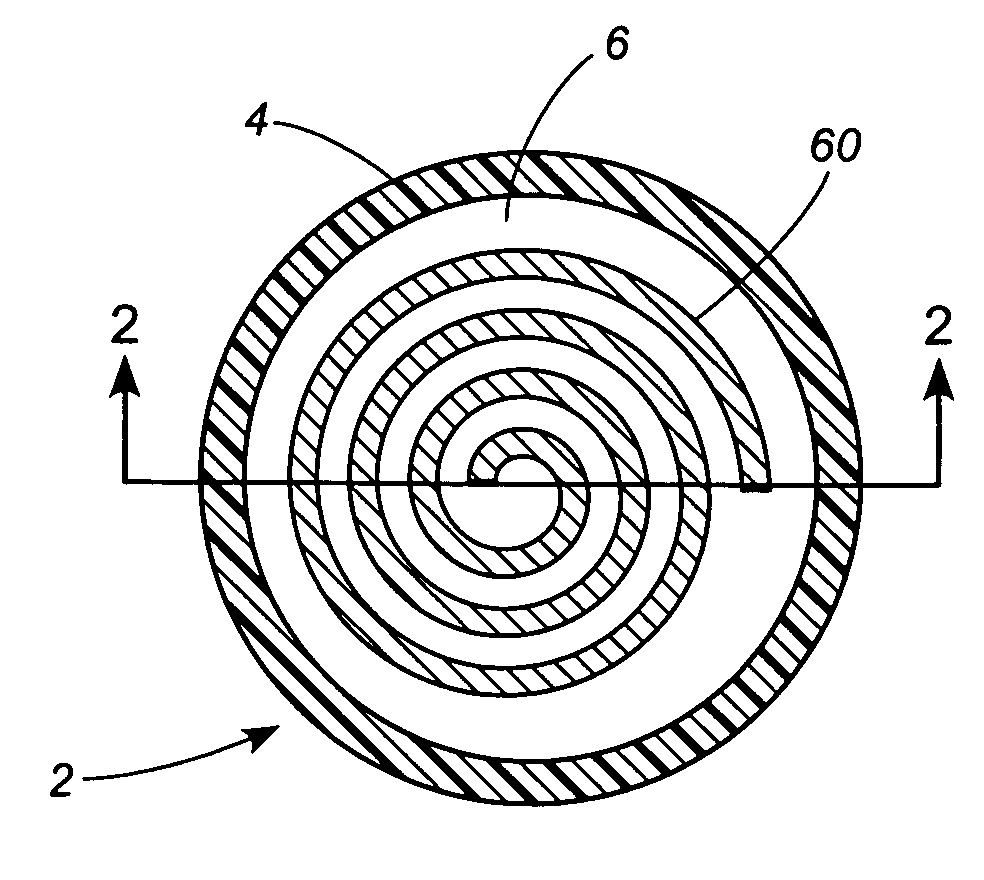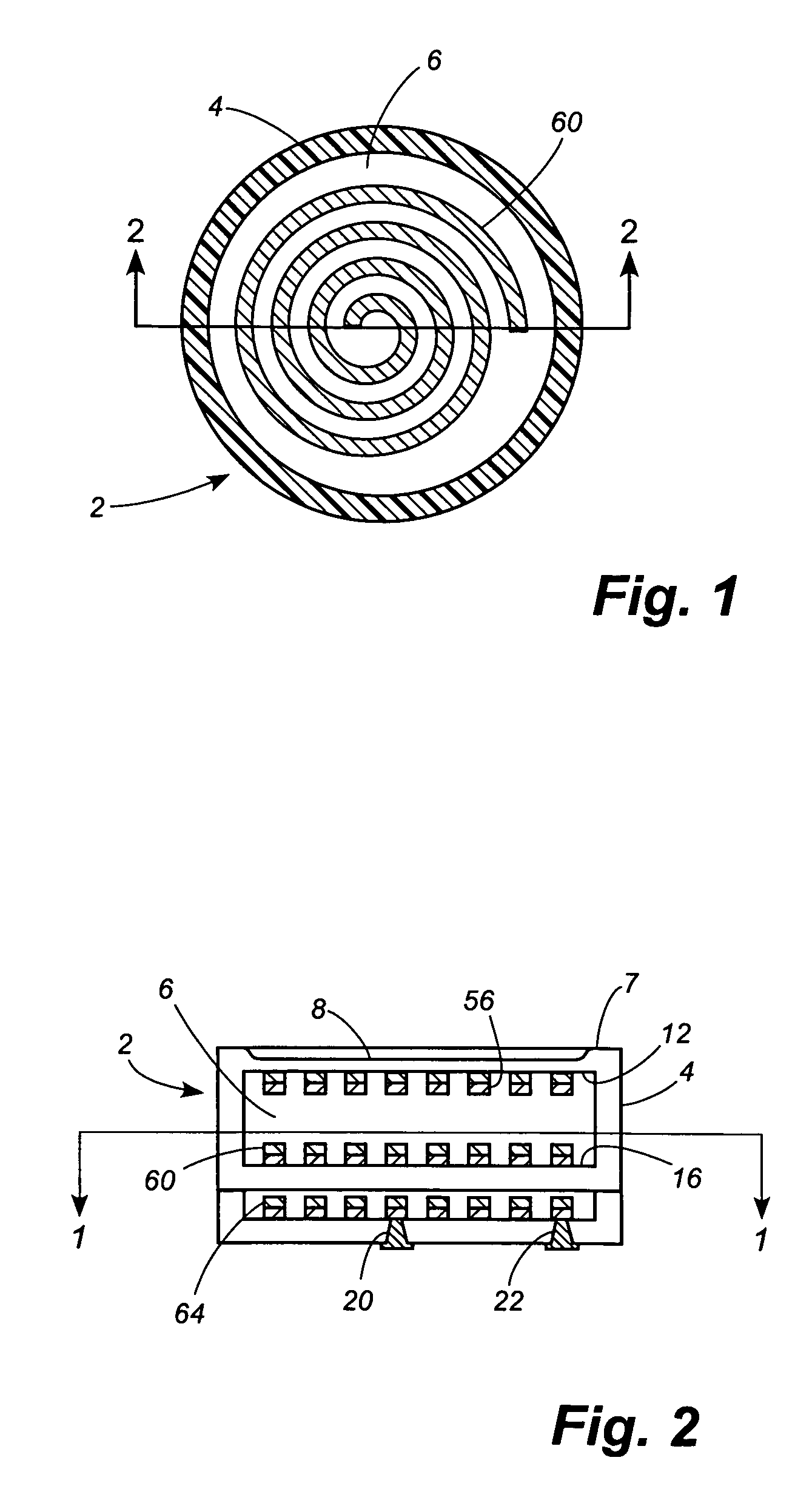Electromagnetically coupled hermetic chamber
a hermetic chamber and electromagnetic coupling technology, applied in the field of sensors, can solve the problems of reducing the reliability of feedthrough, further exacerbated, and the volume change of the pressure reference does not substantially offset the pressure in the pressure reference, so as to reduce the sensitivity to external electromagnetic effects
- Summary
- Abstract
- Description
- Claims
- Application Information
AI Technical Summary
Benefits of technology
Problems solved by technology
Method used
Image
Examples
Embodiment Construction
[0028] Referring now to the drawings, in which like numerals indicate like elements throughout the several views, FIGS. 1 and 2 illustrate a sensor 2 comprising a sensor body 4. The sensor body 4 is formed from electrically insulating materials, particularly biocompatible ceramics and polymers. Suitable ceramic materials include glass, fused silica, sapphire, quartz, or silicon. Suitable polymeric materials include polyimide, liquid crystal polymer (LCP), urethane, polyester, Teflon, FEP, PTFE, polyamide and silicone rubber, treated or configured such that the permeation of these materials is reduced to a level such that leakage rates are commensurate with the definition of hermeticity provided herein. Additionally, the sensor 2 can incorporate radiopaque features to enable fluoroscopic visualization during placement within the body.
[0029] The sensor body 4 defines a hermetic chamber 6. One of the walls 7 defining the hermetic chamber 6 comprises a deflectable region 8 configured t...
PUM
 Login to View More
Login to View More Abstract
Description
Claims
Application Information
 Login to View More
Login to View More - R&D
- Intellectual Property
- Life Sciences
- Materials
- Tech Scout
- Unparalleled Data Quality
- Higher Quality Content
- 60% Fewer Hallucinations
Browse by: Latest US Patents, China's latest patents, Technical Efficacy Thesaurus, Application Domain, Technology Topic, Popular Technical Reports.
© 2025 PatSnap. All rights reserved.Legal|Privacy policy|Modern Slavery Act Transparency Statement|Sitemap|About US| Contact US: help@patsnap.com



